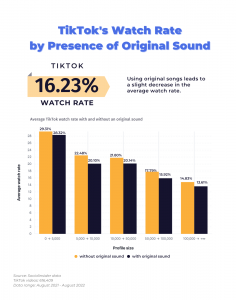Crypto is Madison Avenue’s Dream Opportunity
One of the fastest-growing categories for marketing agencies has been the growth of cryptocurrencies.
As proof of the growth, in all of 2021, there were 54 articles published by MediaPost according to site search that mentioned “crypto” versus only eight in 2020, an increase of more than six fold. And in the first 17 days of January 2022, there were already six articles mentioning “crypto.”
As a rite of passage from the first generation of the internet to the newest generation, Crypto.com recently took over the name of Staples Center, which bought the naming rights at the height of the dot.com boom in 1998.
But the real growth opportunity for the ad industry is not because the crypto market is growing exponentially. The opportunity — particularly in developed markets including North America and Europe, Japan, and Korea — comes from the challenge and opportunity related to market education.
With a robust financial infrastructure in developed markets, where growing up means opening a bank account and signing up for a credit card, there is not the same need for new, decentralized models and currencies that there is in emerging markets. This means that one of the greatest challenges of the cryptocurrency industry is market education — explaining what crypto is about and why we need it.
And that is the advertising industry’s sweet spot.
In 1934, President Franklin D. Roosevelt said the following about the advertising industry’s support in helping the U.S. come out of the Great Depression: “There are few groups which can accept and fulfill the responsibility of properly educating the public as well as the advertising fraternity. You have rendered conspicuous service thus far in presenting sound interpretations of the purposes and objectives of the recovery program.”
Although the development of anonymous cryptographic digital money began in the 1980s, Bitcoin — the first decentralized cryptocurrency — was released in 2009. Since then, cryptocurrencies have been on a roller-coaster ride for much of the last decade.
In 2020, the COVID-19 shutdowns and the ensuing government policies drove investor fears about the global economy (coupled with stimulus checks) to accelerate the rise of Bitcoin and the entire cryptocurrency market.
Bitcoin hit a record high of $64,000 on April 14, 2021 before plunging 50% to $32,000 during the summer of 2021 — only to reach a new high just shy of $70,000 in November 2021.
The growth in the last two years has been driven by one thing: the entrance of new users as well as investors in Bitcoin. And Bitcoin is only one of several leading cryptocurrencies including Ethereum, Litecoin, Ripple, and Cardano, which are fueling the growth of the cryptocurrency industry.
With this volatility and growth comes the need for market education, and this is a major opportunity for advertising, marketing, lobbying, and public relations agencies today. From educating the average user and their grandmother about the opportunities and liabilities of cryptocurrencies to lobbying governments, regulators, and financial institutions, marketing agencies are now being tasked with introducing a new and different financial structure based on blockchain technology and encompassing new offerings like NFTs.
Non-Fungible Tokens (NFTs) are unique and non-interchangeable assets stored on public-facing digital ledgers known as a blockchain. It is this transparent structure, inherent in the technology, which enables proving the ownership of an NFT at any point in time and to trace its history of previous ownership.
It is this ownership structure that has made NFTs attractive to marketers, who are using NFTs as membership cards or tickets, providing access to exclusive events, discounts and merchandise. This, coupled with the hype surrounding NFTs, has pushed marketers to jump on the NFT bandwagon.
The gaming market is providing a unique use case for NFTs through the global gaming sensation Axie Infinity. This blockchain-based game has two million daily active users and $2.4 billion in NFT marketplace volume, according to Axie Infinity creator Sky Mavis. The company is building a tech stack powered by blockchain games that will turn players into citizens and owners of the games that they play.
These sentiments regarding how blockchain will empower gamers were echoed in a tweet from last summer by Chris Dixon, a general partner at noted venture capital firm Andreessen Horowitz. Dixon said the video-game industry does $120 billion in sales, yet most games have 100% take rates. Crypto games like Axie Infinity reduce the corporate take rate, enabling people to pay or work to get ahead.
This is creating a peer-to-peer economy where players fund other players and not just the game developer.
Games are just part of this. The movement to embrace blockchain-based technology running cryptocurrencies and NFTs is part of the movement from Web 2.0 to Web 3.0.
If Web 2.0 is our current web focused on user-generated and participatory content, Web 3.0 will be decentralized and will be based on public blockchains.
From Meta’s announcement of the company’s push into the metaverse to Roblox, Fortnite and all the big tech companies, many technology companies are now working on initiatives to claim their share of Web 3.0.
Meta in particular is eager to build its own platform for the metaverse, given the company’s challenges with Apple around IDFA.
As new prospects learn about cryptocurrencies, they will reach out to their trusted search engine and query “Crypto,” “Blockchain,” “NFT” and other relevant terms.
That’s why the search marketing industry will benefit from this growing market, as they create, optimize and advertise content explaining and supporting the cryptocurrencies and related products and services.
The movement to Web 3.0 also addresses some of the criticism against the leading platforms that creators are at the mercy of the platforms and their algorithms. Just ask LittleThings. Powered by blockchain, new cryptocurrency initiatives like POAP and koodos provide ways for individuals to create and share NFTs around interests and activities.
The marketing community stands to benefit from Crypto, NFTs, blockchain, and the rise of Web 3.0. Marketing agencies will generate revenue as they’re tasked to explain the new, decentralized systems that will power Web 3.0 to consumers, businesses and government. Marketers will also benefit from using blockchain-based technologies to better engage with their customers, through events, rewards, and community, outside of someone else’s walled garden.
(24)





